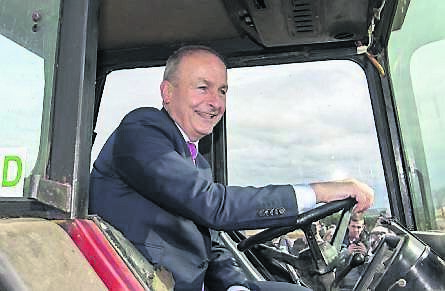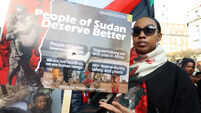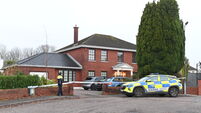Elaine Loughlin: How Ireland set out to tackle the cost-of-living crisis of 1922

The ‘cost-of-living crisis’ will be added as a new term for all those playing budget bingo today.
At this stage, if people received a euro for every time they heard the term ‘cost of living’ over the past six months, they probably wouldn’t have to worry about it.
Rising prices and the financial pressures that families, renters, businesses, and those living alone are faced with heading into a difficult winter is now a challenge more significant than perhaps even Covid.
But the emergency, while all-consuming for the current Government, is not unprecedented and a similar one was preoccupying those in power as the new state was finding its feet.
Exactly 100 years ago, the Provisional Government commissioned an extensive body of work to get a grasp on how exactly inflation was hitting people’s pockets.
A committee comprising representatives from the ministries of agriculture, finance, economic affairs, and labour, was set up to “calculate an official figure indicating in respect of Ireland the change in the cost of living at the present time as compared with the cost of living in 1914”.
Without the aid of computers, Google, mobile phones, and other technology, the committee on the cost of living took just two months between June and August of 1922 to carry out its work and report back.
The committee distributed 5,000 questionnaire forms which were sent through schools to wage-earning households.
![October 1922: WT Cosgrave, centre, with his cabinet [L-R] Joseph McGrath, Hugh Kennedy, Cosgrave, Ernest Blythe, Kevin O'Higgins and JJ Walsh. In advance of establishing the Free State, the provisional government set about tackling the cost-of-living crisis. Picture: Walshe/Topical/Getty October 1922: WT Cosgrave, centre, with his cabinet [L-R] Joseph McGrath, Hugh Kennedy, Cosgrave, Ernest Blythe, Kevin O'Higgins and JJ Walsh. In advance of establishing the Free State, the provisional government set about tackling the cost-of-living crisis. Picture: Walshe/Topical/Getty](/cms_media/module_img/6428/3214337_18_articleinline_1122463_1122463.jpeg)
Of these, 308 were completed from 112 towns, and the committee concluded that 57% of income was being spent on food, 7% on fuel and light, 17% on clothing, and 18% on other expenses, including rent.
The report found that, for every 100 shillings spent by wage-earners in July 1914, 191.35 shillings would have to be spent in order to maintain the same standard of living in March and June 1922.
The report featured tables which recorded the retail prices in Irish towns of 500 inhabitants and upwards; as averaged from returns collected by officers of the Post Office, Ministry of Labour, and Local Government Board.
In a list that was certainly of its time, the change in the price of everything from mutton to corsets, second-grade margarine to pipe tobacco, and paraffin oil, was tracked and recorded.
The table revealed that “Tea, Best” had gone from 30.5d in 1914 to 45.4d in March 1922. Worse still, “Tea, Cheapest” had jumped from 18.3d to 29.1d.
Interestingly, the report concluded that: “It is to be observed that the information collected in the course of this inquiry has incidentally revealed relations between the wholesale and the retail prices of several important commodities and between the prices of the same commodity in similar localities which require explanation.
“This matter is being further examined with a view to determining whether any undue advantage is being taken of the general body of consumers, and, if that be the case, to the adoption of appropriate remedies.”
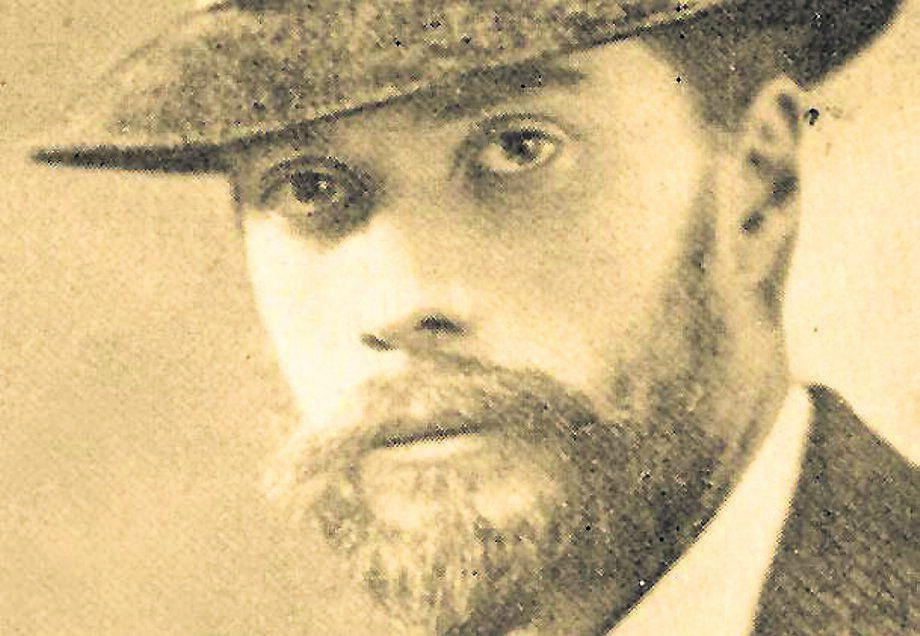
The present Government is faced with the same problem of staggering inflation as its predecessors were dealing with a century ago — but today, they have the ability to act through a budget.
It was a luxury that was not fully afforded to those grappling with the cost-of-living crisis in 1922 as, in that first accounting year, we did not have complete fiscal control as the country was in a transitional period and only left the ‘customs union’ with the UK in the following year.
In the weeks that followed the publication of the 1922 report, there was intense debate in the Dáil.
Politicians demanded the establishment of a commission to examine price-gouging and called for tough sanctions on those who made significant profits at the expense of struggling households.
Independent TD Darrell Figgis told the Dáil it was “not a question of charging anybody with profiteering” but “rather a question of discovering where the manifest discrepancy appears, whether it is an actual question of profiteering by the middleman, or whether it is a question of high freights, or of any of these things.”
Mr Figgis raised what he described as the “very humble matter of cabbages”.
He told of a large field of vegetables in Dublin’s Castleknock that was “being turned over to cattle and sheep rather than being sent in for human consumption because the price would not pay the cost of growth and cartage”.
“The actual price in respect of that commodity at the present moment, wholesale, is 12s a load of 55 dozen,” he told the Dáil.
“The actual retail price at the present moment is relatively 3d or 4d per head, which comes to about £10 per load.
“It is so everywhere, and it is quite clear that there must be some inquiry into this matter and other relative matters if we are to adjust some misfit in the economic machinery.”
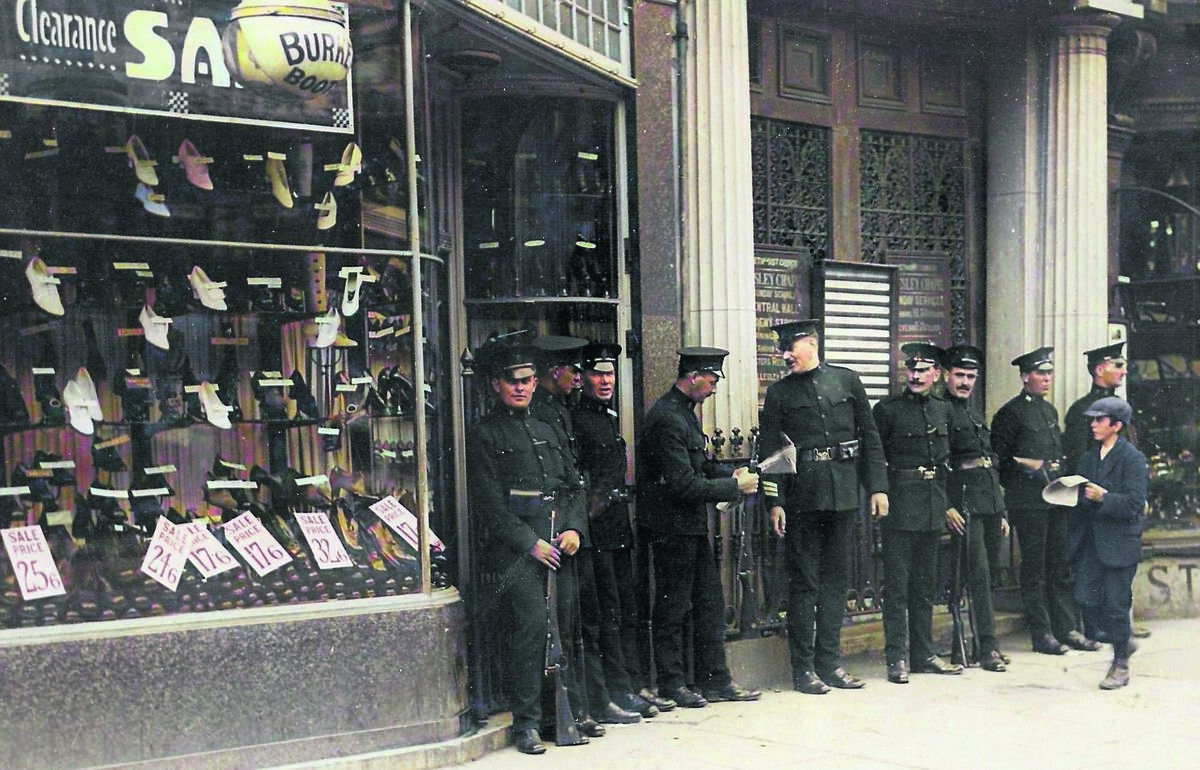
In October of 1922, it was agreed that a commission would be established, which then minister for industry and commerce Joseph McGrath said would “give us the opportunity of finding out exactly what profiteering is going on and where it is going on”.
This body was asked to “inquire into and report on prices, costs or profits at all or any of the stages in the production distribution or sale” of defined goods and in “any case in which prices costs or profits are in the opinion of the commission or of any committee thereof unreasonable to make such recommendations as the commission or committee may think fit".
With fuel and electricity prices rocketing at a time when energy firms are recording massive profits, perhaps an approach the current coalition could consider?
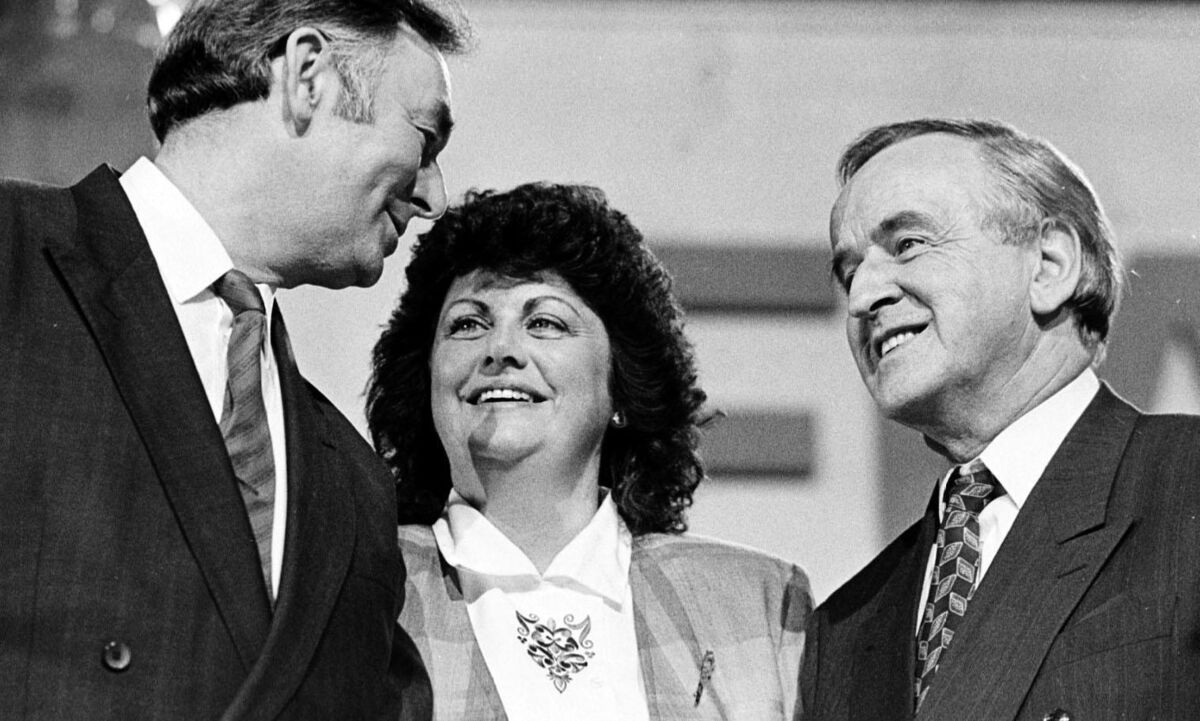
In a slight change to the schedule, this week we look back at budgets of years gone by, which of course happened any time from December through to April.

A fall from a horse meant that then taoiseach Jack Lynch had to deliver the 1970 budget.
Then minister for finance Charles Haughey was left unconscious after coming off a horse at his home. It was later found that he had fractured his skull, torn his right eardrum, broken his right collarbone, and was also severely concussed.
The budget failed to pass in the Dáil, resulting in a collapsed Fine Gael-Labour coalition government and a general election was called.
The failure of the controversial budget was largely due to opposition to the introduction of a tax on children’s shoes.
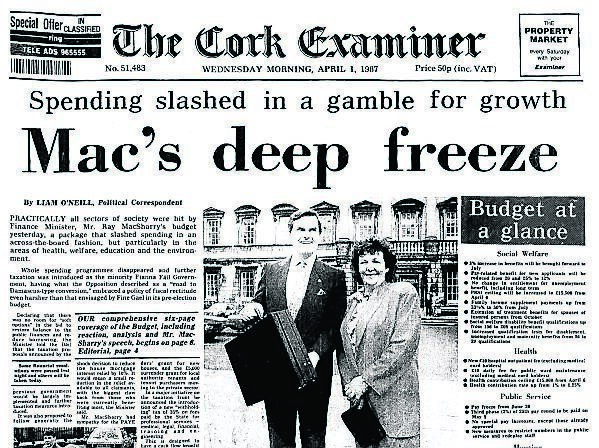
The ‘Mac the Knife’ budget saw spending slashed across the board, but particularly in the areas of health, welfare, education, and environment.
Under the headline ‘Mac’s Deep Freeze”, reported that whole spending programmes disappeared and further taxation was introduced as part of minister Ray MacSharry’s budget with “fiscal rectitude” being the buzzword of the day.
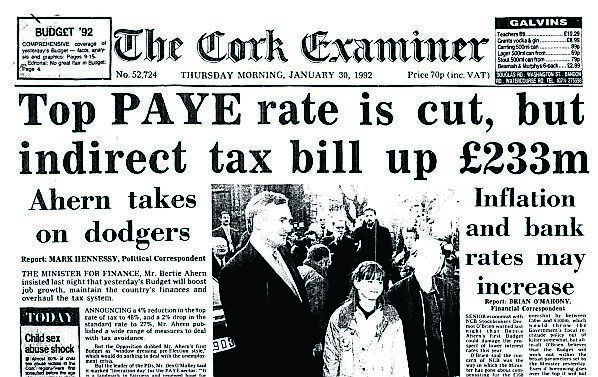
Bertie Ahern delivered his first budget as finance minister. However, budget day was overshadowed by a Fianna Fáil leadership debate. The opposition dubbed Mr Ahern’s budget as “window-dressing pre-election style”.
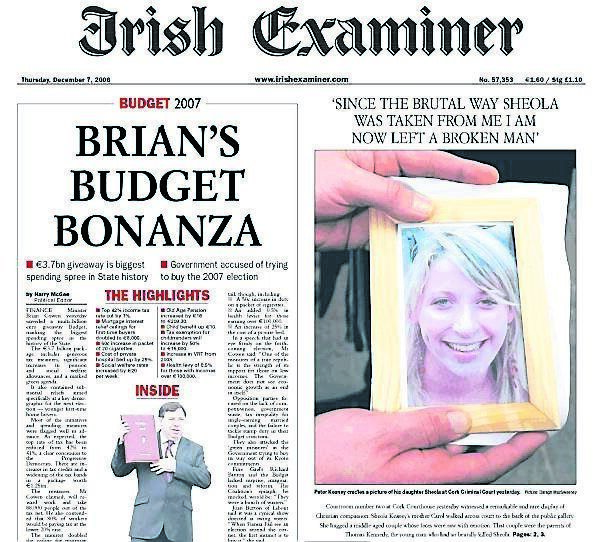
A multibillion-euro giveaway budget was introduced at a
time of economic buoyancy allowing for a 1% reduction in the top rate of tax to 41% and €20 increases in weekly social welfare rates.
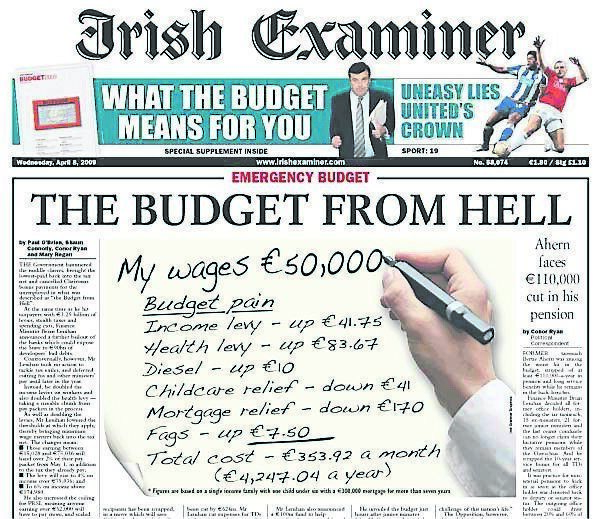
With the country spiralling into recession, an emergency budget was held in April.
The reported on “the Budget from Hell” which “hammered the middle classes, brought the lowest-paid back into the tax net, and cancelled Christmas bonus payments for the unemployed”.
